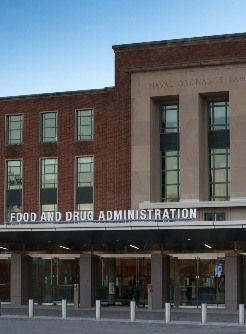Diagnosing Hodgkin Lymphoma in Kids Requires Biopsy, Immunohistochemistry: Guidelines
By Will Boggs MD, Reuters Health
October 20, 2020
The diagnosis of pediatric Hodgkin lymphoma requires an excisional or incisional biopsy and immunohistochemistry (IHC) evaluation, and its management depends largely on the clinical stage and risk group, according to new guidelines from the National Comprehensive Cancer Network (NCCN).
"These are general guidelines to assist in the treatment of patients with pediatric Hodgkin lymphoma, but every patient is unique," Dr. Jamie E. Flerlage of St. Jude Children's Research Hospital and The University of Tennessee Health Science Center, in Memphis, told Reuters Health by email. "You must take the patient and his or her individual risk factors into account."
The guidelines, which apply to both children and young adults up to the age of 39 years, were published on the NCCN website.
Following diagnosis by biopsy and IHC evaluation to identify immunophenotype, workup should include complete history and physical, lab work, imaging, and counseling regarding fertility, smoking/drug cessation, and psychosocial factors relevant to supportive care, the authors say.
Risk stratification depends upon clinical stage, but continues to evolve. In the current guideline, only stage IIB with bulky disease was upstaged to high risk.
Regardless of risk category, the preferred primary treatment is involvement in an ongoing clinical trial. When that is not possible, various chemotherapeutic regimens can be useful and differ according to the risk category.
"Radiation therapy is extremely effective for Hodgkin lymphoma, but current treatments attempt to limit radiation fields to small areas with inadequate response, as defined by that specific treatment protocol, after 2 cycles of chemotherapy," Dr. Flerlage said.
"Staging and determination of response to therapy are complex and challenging if it is not something you are familiar with," he added. "Therefore, consultation with a center of expertise for any questions on application of the guidelines, interpretation of imaging, especially PET scans, is encouraged."
Follow-up after completion of treatment should include surveillance every three to four months for one to two years, then every six to 12 months until the third year, and then annually until five years. Monitoring for late effects should continue for at least two years after completion of systemic therapy.
"Imaging after the end of therapy is no longer mandated as data has demonstrated that there is no change in outcome if you wait for clinical symptoms or find a relapse on imaging first," Dr. Flerlage said. "Therefore, the recommendation for follow-up remains a history and physical exam with imaging only if there is a clinical concern."
There is no standard of care treatment for patients who relapse. "Therefore," Dr. Flerlage said, "a long list of options is provided. Most people utilize a regimen they are most familiar with first, but we are awaiting emerging data from a Children's Oncology Relapse trial to help clarify outcomes of one regimen over another."
"Additionally, there is a small group of patients who relapse and can be adequately treated without autologous hematopoietic cell transplant," he said. "This is also a challenging group to identify, as there are numerous factors that must be taken into consideration when making this decision. Such patients would benefit from referral to a center of expertise with experience managing these rare patients."
The guidelines include specific recommendations regarding IHC and ancillary testing; pathology considerations in the relapse/refractory disease setting; and the principles of imaging, staging, systemic therapy, and radiation therapy of these patients.
"Given the survival rate of these patients, reduction of late effects has been the focus of pediatric trials," Dr. Flerlage said. "Therefore, when choosing a treatment regimen, it is imperative to review the cumulative anthracycline dose along with the indications and guidelines for radiation therapy associated with that regimen to aid in decision-making."
"This is the reason for referral to current clinical trials, as well," he said. "Most open trials attempt to maintain excellent survival rates while reducing a factor that contributes to long-term toxicities of therapy."
SOURCE: https://bit.ly/3nYqJgz National Comprehensive Cancer Network, online September 28, 2020.
















.jpg)





.jpg)






.jpg)
.jpg)
.jpg)
.jpg)
.jpg)
.jpg)
.jpg)

.jpg)
.jpg)